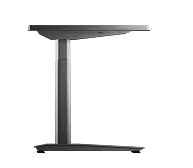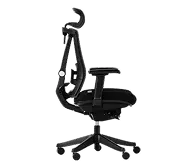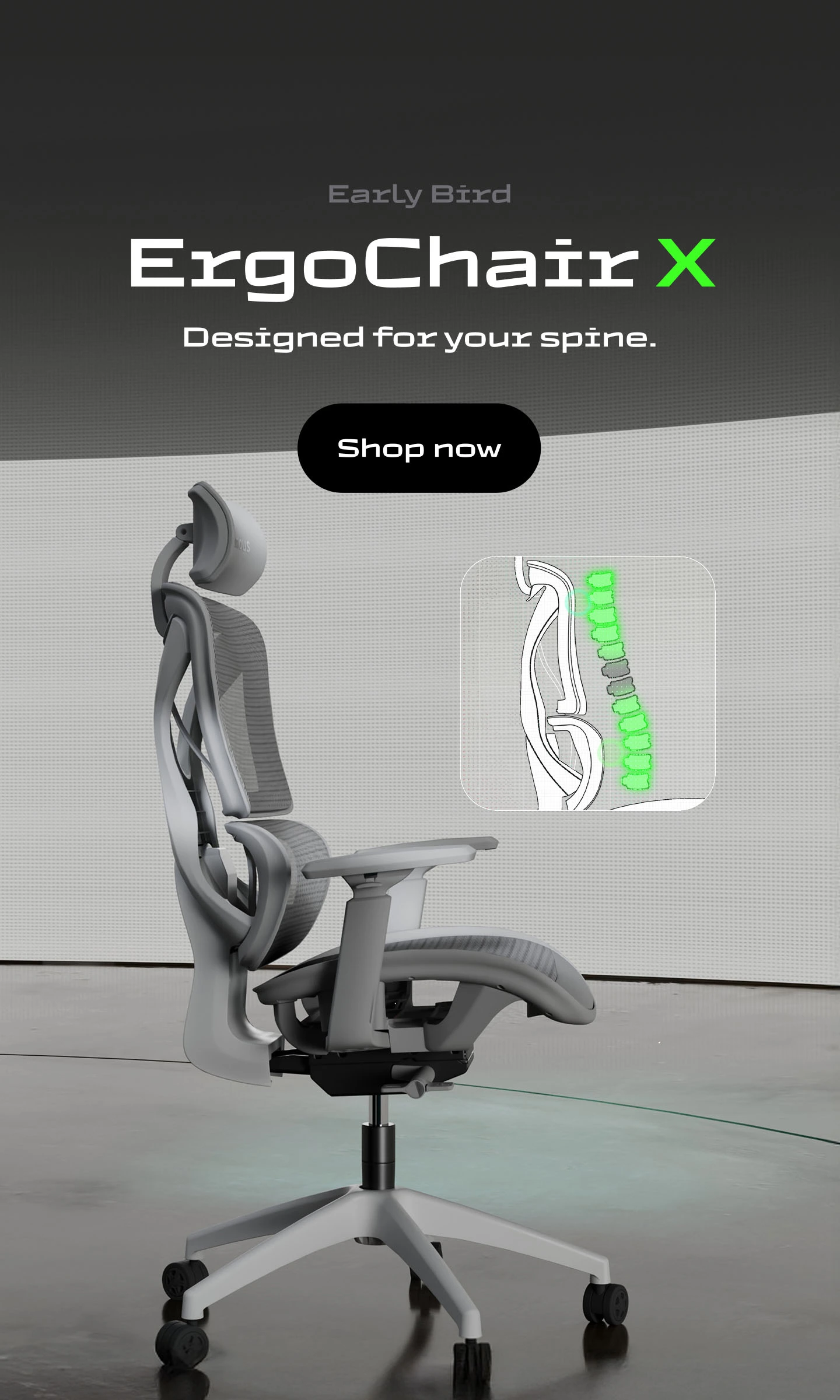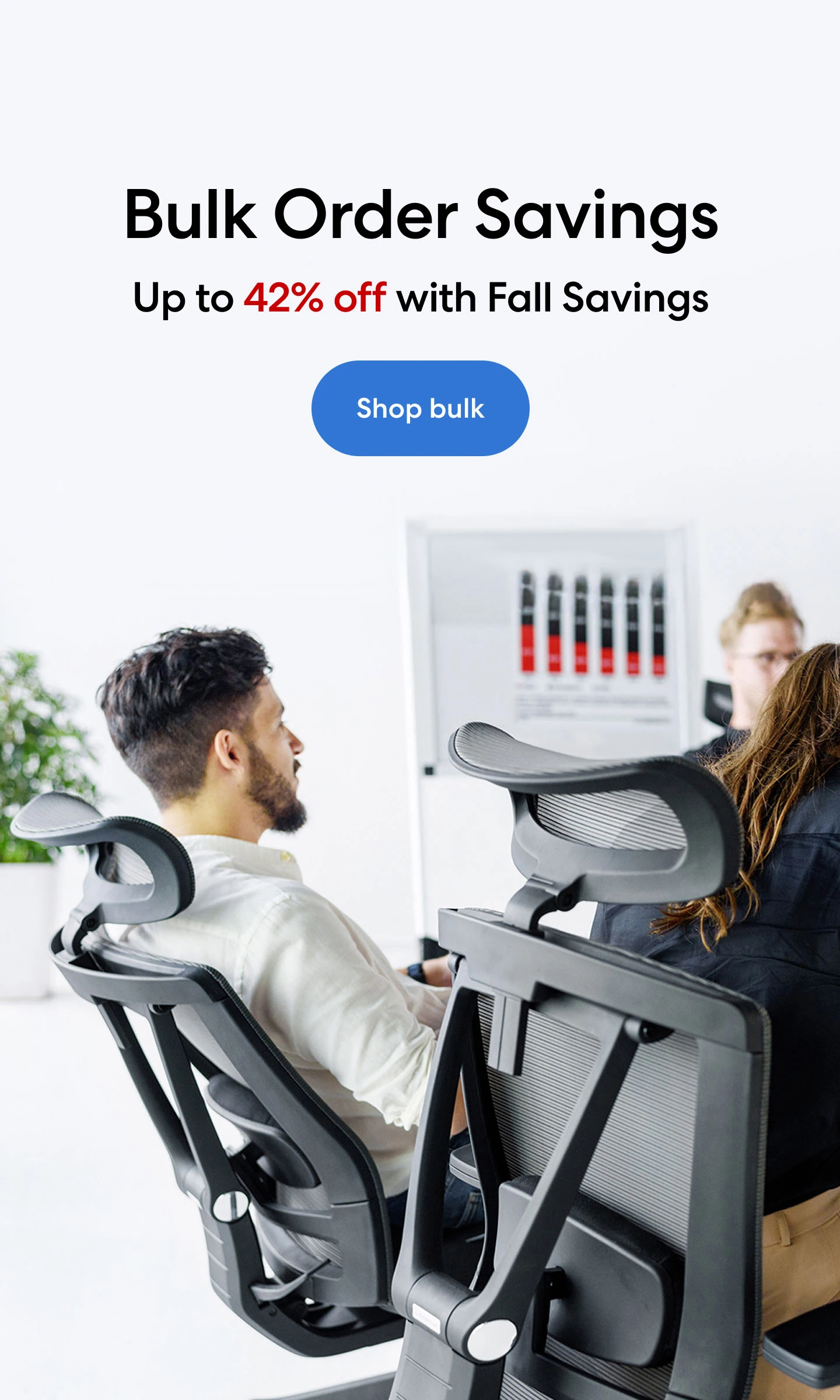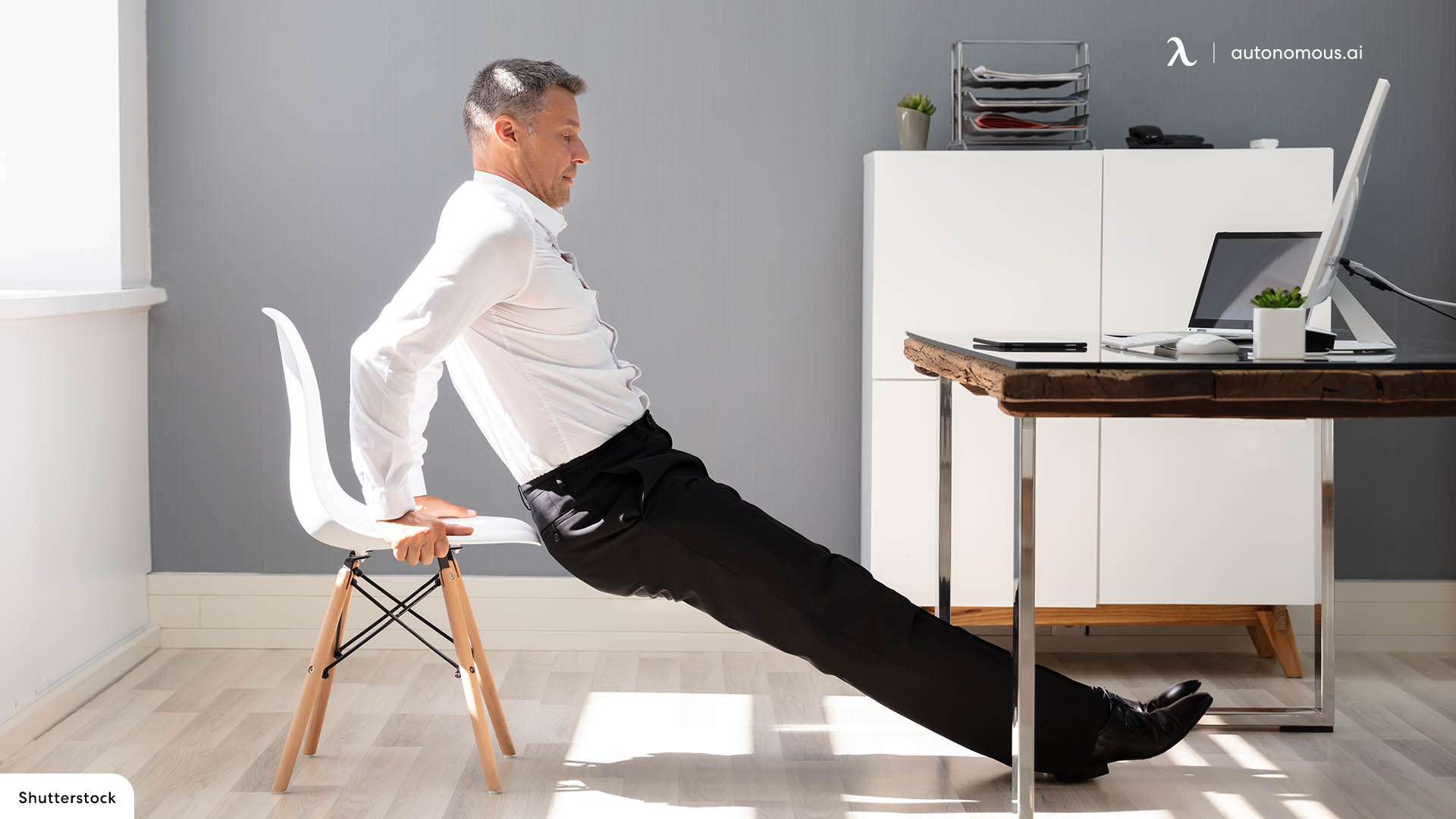
10 Chair Exercises for Upper Body: Boost Strength & Comfort
Table of Contents
In the modern work environment, many people spend hours sitting at their desks, which can lead to physical discomfort and poor posture. Integrating chair exercises for the upper body into your daily routine can be an effective way to counteract these issues. These exercises are particularly beneficial for seniors, busy professionals, and anyone looking to improve their overall well-being without leaving their desk. By focusing on upper body workouts, you can alleviate common problems like back pain, enhance posture, and boost productivity.
Benefits of Chair Exercises
- Alleviate Back Pain
Back pain is a common issue for those who sit for extended periods. Chair exercises designed to strengthen the upper back and shoulders can help alleviate discomfort. Incorporating these exercises alongside selecting the best chair for lower back pain at home can provide significant relief. The combination of supportive furniture and targeted exercises helps reduce strain and improve overall comfort.
- Improve Posture
Good posture is essential for preventing and managing back pain. Regular chair exercises strengthen the muscles that support the spine, leading to better alignment and reduced strain on your back. For a comprehensive approach, consider pairing these exercises with a good posture office chair, which offers additional support and promotes proper sitting posture at computer habits.
- Enhance Flexibility
Seated stretches and movements increase your range of motion, helping to prevent stiffness and maintain flexibility. This is especially useful for those who experience tightness or discomfort from long periods of sitting. To further enhance your comfort, check out our guide on how to make your height-adjustable chairs higher, which can help ensure your chair is optimally adjusted for your body.
- Increase Strength
Strengthening upper body muscles through chair exercises can improve overall fitness and reduce fatigue. This can make daily tasks easier and more manageable. For targeted strength-building routines, explore our tips on chair exercises for men.
.webp)
10 Simple and Efficient Upper Body Chair Exercises
1. Seated Arm Circles
Extend your arms to the sides and make small circles. This exercise enhances shoulder flexibility and strength, providing relief from shoulder tension. For best results, ensure your chair supports your back to maintain proper posture during the exercise.
2. Seated Shoulder Presses
Push your arms overhead and then lower them. This move strengthens your shoulders and triceps. Performing this exercise with light weights or resistance bands can further enhance its benefits, supporting both muscle tone and overall strength.
3. Seated Bicep Curls
Using light weights or resistance bands, curl your arms up towards your shoulders. This exercise targets the biceps and helps maintain muscle tone. Incorporating this into your routine can improve arm strength and reduce muscle fatigue.
4. Seated Tricep Dips
Place your hands on the edge of your chair, slide forward, and lower your body, then push back up. This targets the triceps and can be complemented by a chair that helps maintain the ideal height for your office chair.
5. Seated Chest Press
Push your palms together in front of you and hold. This engages your chest muscles and helps improve upper body strength. Regular practice can help alleviate tightness in the chest and improve overall muscle balance.
6. Seated Rowing
Pull your arms back as if rowing a boat, squeezing your shoulder blades together. This strengthens the upper back and helps alleviate discomfort from poor posture. Proper back support from your chair can enhance the effectiveness of this exercise.
7. Seated Side Bends
With one hand on your chair, lean sideways, stretching the opposite side. This improves flexibility in your torso and helps counteract stiffness from prolonged sitting. It’s a useful exercise for maintaining flexibility and reducing side muscle tightness.
8. Seated Torso Twists
Twist your torso to each side while keeping your hips forward. This exercise targets the oblique muscles and improves spine mobility. It’s beneficial for maintaining flexibility and reducing stiffness in the spine and torso.
9. Seated Shoulder Shrugs
Lift your shoulders up towards your ears and then release. This helps relieve tension in the neck and shoulders, especially useful for those with stress-related tightness in the upper body.
10. Seated Overhead Reach
Stretch one arm overhead and reach to the opposite side to lengthen your side muscles. This exercise helps improve flexibility and alleviate stiffness from long periods of sitting.
Incorporating Standing Desks
Integrating standing desks into your workspace offers additional benefits and complements chair exercises. Alternating between sitting and standing not only helps to reduce the risks associated with prolonged sitting but also enhances overall productivity.
- Balance Between Sitting and Standing
Transitioning between seated and standing positions throughout the day can help alleviate discomfort and prevent the negative effects of continuous sitting. Pairing chair exercises with standing desk use ensures that you remain active and engaged.
- Adjustable Standing Desks
When using a standing desk, make sure it’s set at a comfortable height. Your monitor should be at eye level, and your arms should be able to rest comfortably while typing. This setup helps reduce strain and encourages better posture.
- Dynamic Movements
While working at a standing desk, incorporate simple standing stretches or movements, such as calf raises or light leg lifts, to maintain circulation and prevent stiffness.
Practical Tips:
Adjustable Heights: Ensure that both your ergonomic chair and desk are adjustable to switch between sitting and standing as needed. An ergonomic desk setup can prevent strain and enhance comfort.
Movement Integration: Regularly integrate both seated and standing exercises into your routine to keep your body active and engaged. This approach helps in managing fatigue and maintaining focus throughout the workday.
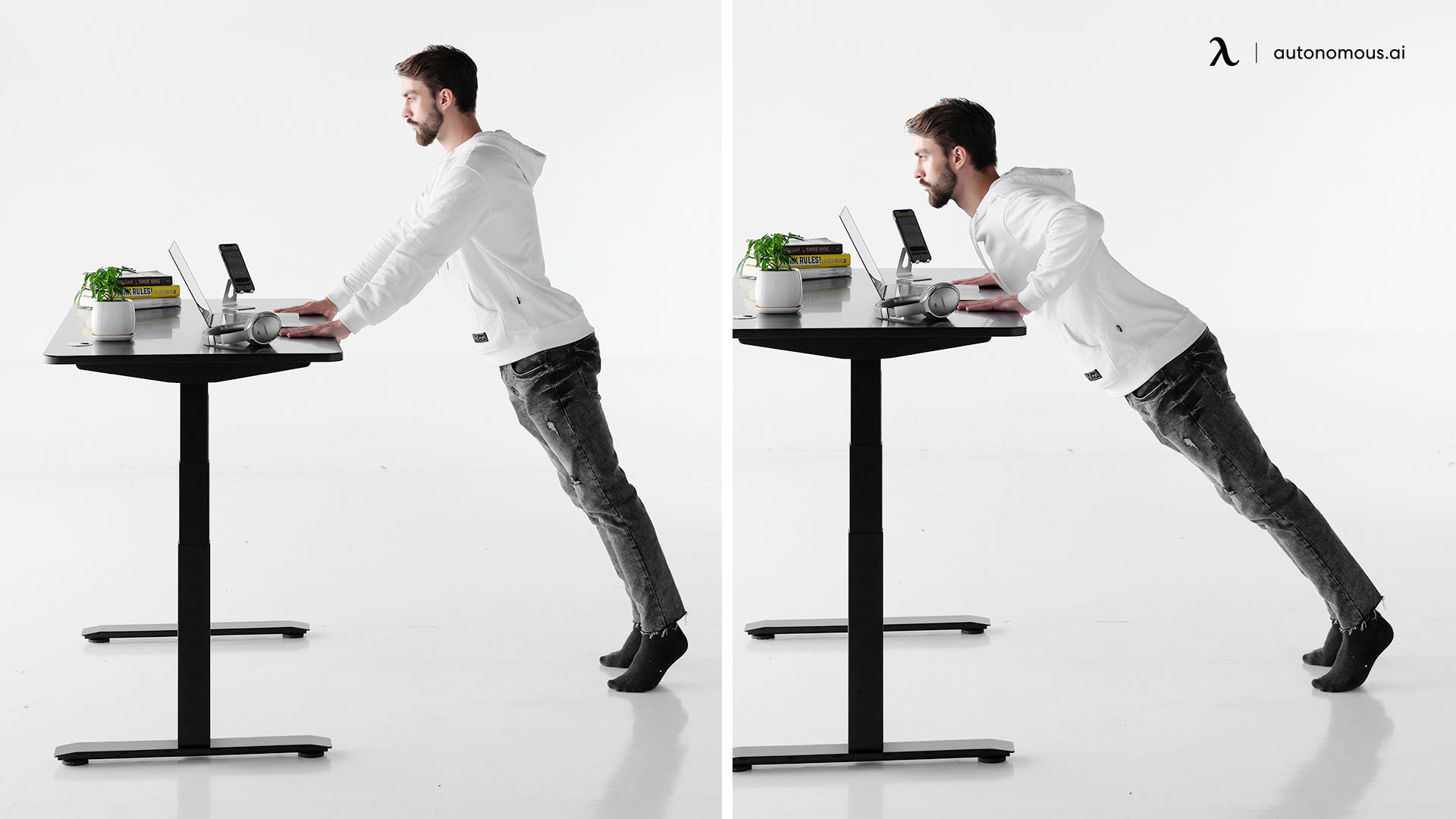
FAQs
1. What are chair exercises for the upper body?
Chair exercises for the upper body involve performing workouts while seated, targeting muscles in the arms, shoulders, back, and chest. These exercises are designed to improve strength, posture, and flexibility without requiring you to leave your chair.
2. Why should I incorporate chair exercises into my routine?
Chair exercises can help alleviate back pain, improve posture, enhance flexibility, and increase upper body strength. They are especially useful for individuals who spend long hours sitting and need a convenient way to stay active. If you experience any discomfort, consider exploring our tips on how to stop bum sweat on chairs for additional comfort.
3. How often should I do chair exercises?
Aim to perform chair exercises 2-3 times daily. Even short, frequent sessions can significantly benefit your comfort and overall well-being.
4. Are chair exercises suitable for everyone?
Most chair exercises are accessible to various fitness levels. However, consult with a healthcare provider if you have any pre-existing conditions or injuries to ensure these exercises are appropriate for you.
5. Can chair exercises improve my work productivity?
Yes, reducing discomfort and stiffness through chair exercises can enhance focus and productivity. Additionally, combining these exercises with the most comfortable office chair for long hours, such as the best 8-hour office chair and the best desk chair for back pain, can further improve your work environment.
6. How long should each exercise session last?
Each session can be as brief as 5-10 minutes. Focus on performing the exercises with proper form and control to achieve the best results.
Conclusion
Incorporating chair exercises into your daily routine offers a practical solution for improving upper body strength and alleviating common discomforts associated with long periods of sitting.
These office chair exercises are designed to be simple yet effective, allowing you to stay active and enhance your well-being without leaving your chair. By dedicating a few minutes each day to these workouts, you can experience benefits such as reduced back pain, improved posture, and increased flexibility. Embrace these exercises to make your workday more comfortable and boost your overall productivity. With consistent practice, you'll find that small adjustments can lead to significant improvements in both your physical health and work performance.
Spread the word

.svg)
